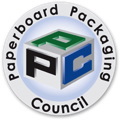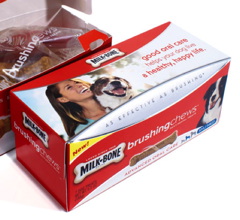PPC Reports on Packaging Design Trends
- Published: August 16, 2017
SPRINGFIELD, MA | The Paperboard Packaging Council (PPC) reports several trends in folding carton and rigid box design, as distilled from the recently adjudicated 2017 North American Paperboard Packaging Competition. PPC says that while the winners will be revealed in October during its Fall Meeting, the overall trends should help converters and brand owners today in considering where their own recent work fits in—and how they can pivot from these trends in order to discover what’s next. 
Disrupter Structures
This year many customers asked their paperboard packaging manufacturers to create designs that would “disrupt” the store shelf, i.e., stand out at retail. For example, many entries incorporated “arcuate” or circular scoring to create an additional panel on the front of their packages. This not only provides a unique bow-shaped structural element that interrupts monotony at retail, it also creates additional space for branding and graphics. (See the curved silver panel between the front and top panels on the accompanying image of the Milk Bone carton by Hub Folding Box.) Other disrupter designs incorporated sweeping curves and pyramidal shapes. A few packages were also intentionally designed to be taller or wider than the average folding carton.

Sustainability Comes Standard
PPC notes that paper is renewable and recyclable by its very nature, and because of that, the paperboard packaging industry has always had a great sustainability story to tell. The organization adds that, over the years converters have been working to perfect that story by embracing sustainable manufacturing practices like material reductions, use of clean energy, and sourcing from managed forests. Nearly every entry in the 2017 Carton Competition incorporated sustainability in some way. E.g., many entry forms revealed that the cartons were converted using paperboard that came from FSC and SFI certified responsibly managed forests. However, in most cases, this environmental accolade was not revealed on the package. PPC believes this suggests that sustainability has become so integral to paperboard packaging design that no special mention is necessary. “Sustainability is business as usual. It comes standard,” says PPC.
Expanding the Senses
Today, packaging is about experience, PPC adds. Brands don’t only want to engage consumers visually, they want to immerse them in multisensory experiences that elongate and deepen their interactions with the packaging, product, and brand. Many cartons entered into the competition this year upped the ante when it came to heightened sensory experience. In terms of tactile experience, soft touch coating was king. Nearly 100% of the cosmetics cartons and about 30% of the entries overall were finished with soft touch, which imparts a rich, velvety feel to the package. This is compared to five years ago, when there were only three or four entries with soft touch. Some entries also incorporated audible elements into their designs. Several cartons had open and reclosure features that click when the consumer closes the package. According to PPC, the judges were pleased with this feature for two reasons: First, because the audible click gives consumers assurance that the package has closed properly; and second, because it allows for smooth and esthetically pleasing interactions with the carton—the consumer can open and close the pack over and over without tearing it.
(Even) More Digital
Last year PPC reported an increase in the number of digitally printed folding cartons entered into the competition, and 2017 saw even more digital converting. Many of these cartons were made for smaller customers who desired speed to market and fast turnarounds. As technology becomes more sophisticated and accessible, more and more converters seem to be turning to digital presses to provide customers with speed and flexibility, says PPC, adding that if digital entries continue to increase at the same rate over the next years, it might even introduce a special category for digital.
Another point of interest is the use of laser cutting as opposed to traditional die-cutting. This new equipment allowed converters to add detailed and intricate cutting embellishments to their cartons. In many cases, these cuts simply look like printing because they are so fine.
This email address is being protected from spambots. You need JavaScript enabled to view it.




